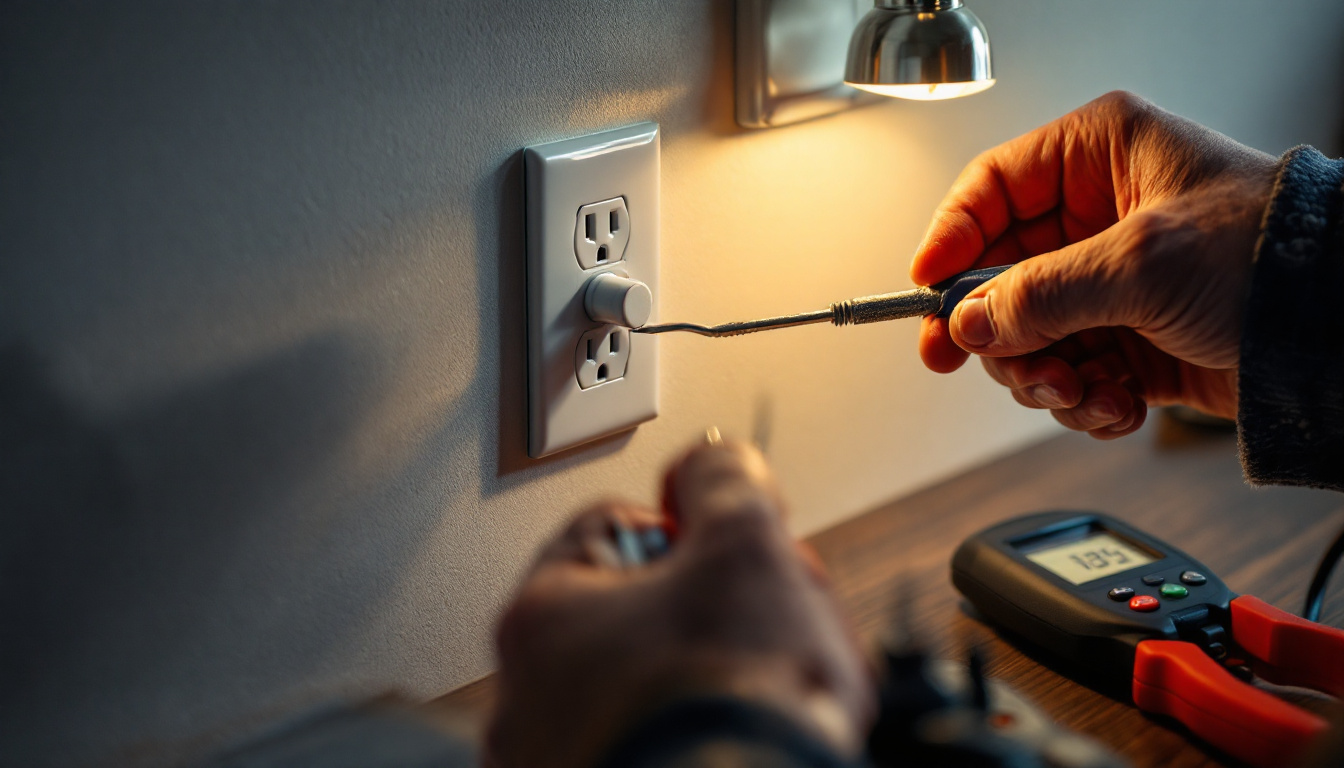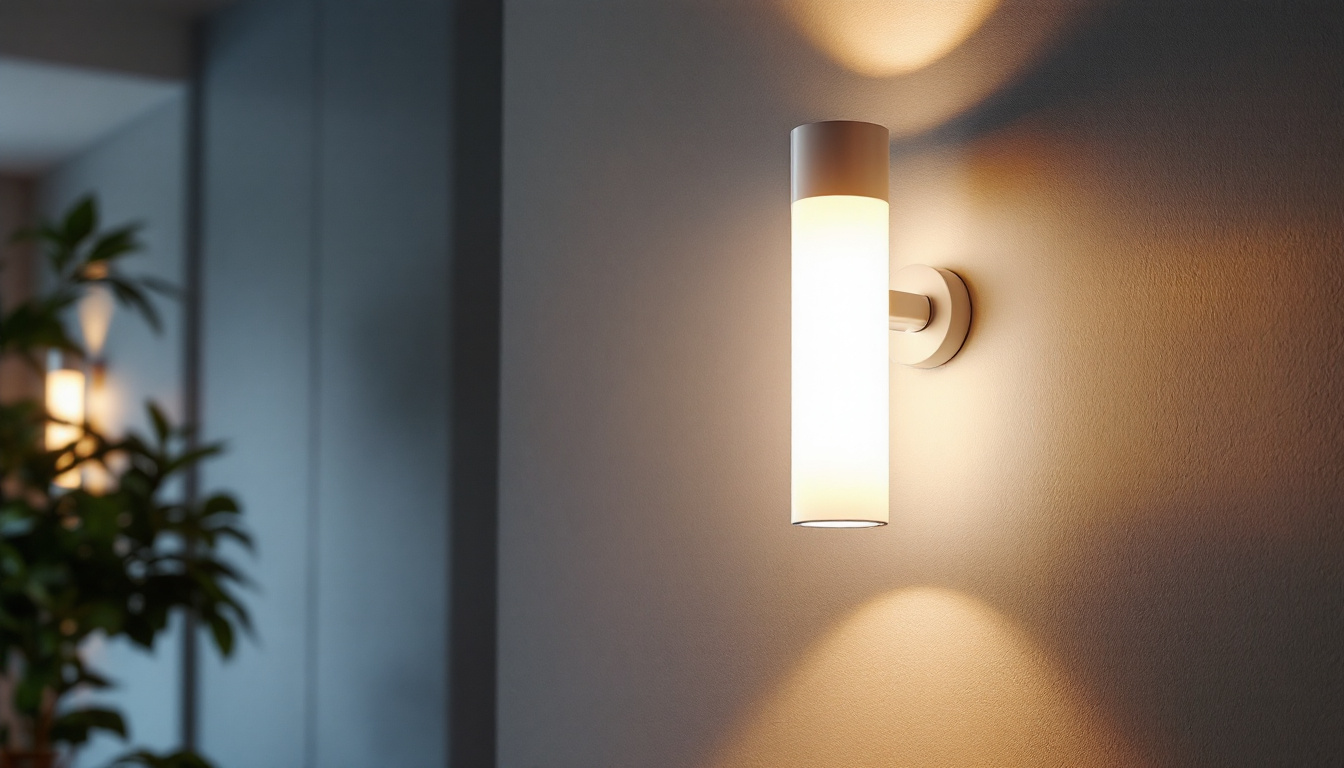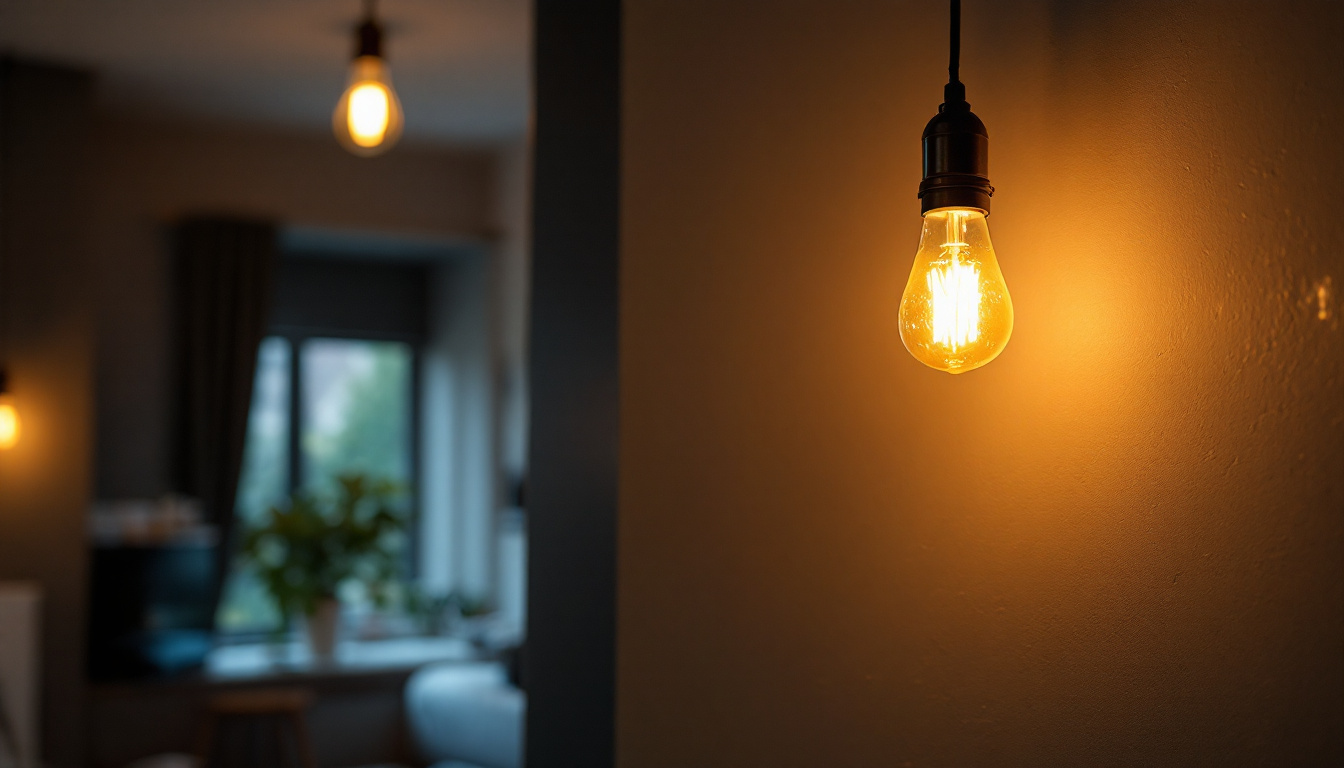

duplex receptacles are a fundamental component in the electrical systems that lighting contractors work with daily. These devices provide a convenient way to connect multiple electrical devices to a single power source, making them indispensable in residential and commercial lighting installations. Understanding their function and specifications is vital for ensuring safety and efficiency in any project.
Typically, a duplex receptacle consists of two outlets, allowing for the simultaneous connection of two devices. This feature is particularly useful in areas where multiple light fixtures or equipment need to be powered, such as in kitchens, living rooms, and office spaces. The versatility of duplex receptacles makes them a go-to choice for contractors looking to streamline their installations. Moreover, the placement of these receptacles can significantly impact the overall functionality of a space, ensuring that power is readily available where it is most needed.
There are several types of duplex receptacles available, each designed for specific applications. Standard duplex receptacles are the most common, providing basic functionality for everyday use. However, there are also GFCI (Ground Fault Circuit Interrupter) and AFCI (Arc Fault Circuit Interrupter) receptacles, which offer added safety features. GFCI receptacles are essential in areas exposed to moisture, such as bathrooms and kitchens, as they help prevent electrical shocks. Meanwhile, AFCI receptacles are designed to prevent electrical fires by detecting arcing conditions. These safety features are particularly important in modern electrical installations, where the risk of electrical hazards must be proactively managed.
Choosing the right type of duplex receptacle for a given project is crucial. Lighting contractors must assess the environment and potential hazards to select the most appropriate option, ensuring both safety and compliance with electrical codes. Additionally, the integration of smart technology into duplex receptacles is becoming increasingly popular, allowing for remote control and automation of connected devices, which can enhance energy efficiency and user convenience.
When selecting duplex receptacles, several specifications should be taken into account. Voltage rating is one of the primary considerations; most residential applications require 120V receptacles, while commercial settings may necessitate 240V options. Additionally, the amperage rating, typically 15A or 20A, should align with the expected load to prevent overheating and potential hazards. Understanding these ratings is essential for ensuring that the receptacles can handle the electrical demands of the devices they will support, thereby reducing the risk of circuit overloads.
Another important specification is the material of the receptacle. High-quality materials, such as thermoplastic or nylon, can enhance durability and resistance to wear and tear. Furthermore, contractors should consider the design of the receptacle, including features like tamper-resistant outlets, which add an extra layer of safety, especially in homes with young children. The color and finish of duplex receptacles can also play a role in design aesthetics, allowing contractors to match them with the overall décor of a space. In addition, some receptacles come with built-in USB ports, catering to the growing demand for charging devices without the need for additional adapters, thus further enhancing their functionality in today’s tech-driven environments.
Equipping oneself with the right tools is crucial for lighting contractors when installing duplex receptacles. A well-prepared toolkit not only enhances efficiency but also ensures that installations are performed safely and correctly. Here are some essential tools that should be included in every contractor’s arsenal.
At the core of any electrical installation are basic tools such as wire strippers, pliers, and screwdrivers. Wire strippers are essential for removing insulation from wires without damaging the conductor, while pliers are useful for bending and twisting wires. A set of screwdrivers, including both flathead and Phillips, is necessary for securing duplex receptacles to electrical boxes.
Additionally, a voltage tester is an indispensable tool for ensuring that circuits are de-energized before beginning work. This safety measure helps prevent electrical shocks and injuries, making it a non-negotiable item in any contractor’s toolkit. Beyond these basics, a good-quality flashlight or headlamp can significantly improve visibility in dimly lit spaces, allowing contractors to work more efficiently and safely, especially in tight or cluttered areas where shadows can obscure potential hazards.
For more advanced installations, lighting contractors may benefit from tools that enhance precision and efficiency. A multimeter, for example, is a versatile tool that can measure voltage, current, and resistance, allowing contractors to troubleshoot electrical issues effectively. This tool is particularly useful when diagnosing problems with existing circuits or verifying that new installations are functioning correctly.
Another valuable tool is a circuit tracer, which helps locate wires and circuits without the need for extensive wall damage. This can be especially helpful in retrofitting projects where existing wiring must be integrated with new installations. Furthermore, a laser level can be an excellent addition to a contractor’s toolkit, ensuring that fixtures are installed straight and at the correct height. This not only contributes to the aesthetic appeal of the installation but also ensures compliance with building codes and standards, which can vary significantly from one area to another. By investing in these advanced tools, contractors can enhance their skill set and deliver high-quality work that meets or exceeds client expectations.
Proper installation of duplex receptacles is critical for ensuring safety and functionality. Following best practices not only helps in achieving a professional finish but also minimizes the risk of future electrical issues. Here are some key considerations for lighting contractors during installation.
Before commencing any installation, safety should be the top priority. Always ensure that the power is turned off at the circuit breaker before working on any electrical components. Using a voltage tester to double-check that the circuit is de-energized is a crucial step that should never be overlooked.
Additionally, wearing appropriate personal protective equipment (PPE), such as safety glasses and insulated gloves, can further reduce the risk of accidents. Contractors should also be familiar with local electrical codes and regulations, as adherence to these guidelines is essential for ensuring safety and compliance. Moreover, it is wise to keep a first aid kit readily accessible on-site, as well as to have a clear plan for emergency situations. Regular safety training sessions can also help reinforce best practices among team members, ensuring that everyone is equipped with the knowledge to work safely and efficiently.
When wiring duplex receptacles, it is important to follow proper techniques to ensure a secure and functional connection. Begin by stripping the wire insulation to the appropriate length and twisting the wires together securely. For a standard duplex receptacle, the black (hot) wire connects to the brass terminal, while the white (neutral) wire connects to the silver terminal. The bare or green wire, representing ground, should be attached to the green terminal.
It is also advisable to use the back-wiring feature of duplex receptacles when available, as this can simplify the installation process and provide a more reliable connection. Ensuring that all connections are tight and secure will help prevent future issues, such as loose connections that can lead to arcing or overheating. Additionally, it is beneficial to label wires clearly, especially in complex installations, to avoid confusion during future maintenance or upgrades. Utilizing wire nuts or other secure connectors can further enhance the integrity of the connections, providing peace of mind that the installation will stand the test of time.
One of the most common issues with duplex receptacles is the failure of the outlet to provide power. This can be caused by a tripped circuit breaker, a blown fuse, or a faulty receptacle. To troubleshoot, start by checking the circuit breaker panel to see if any breakers have tripped. If so, resetting the breaker may resolve the issue.
If the circuit breaker is functioning properly and the receptacle still does not work, the next step is to inspect the receptacle itself. Loose connections or damaged wiring can prevent power from reaching the outlet. In such cases, replacing the receptacle may be necessary.
Overheating of duplex receptacles is another common concern. This can occur due to several factors, including overloading the circuit, poor connections, or using incompatible devices. Contractors should ensure that the total load on the circuit does not exceed the receptacle’s amperage rating.
If overheating is detected, it is crucial to address the issue immediately. Inspect the connections for any signs of damage or burning, and replace any faulty components. Additionally, consider redistributing the load across multiple circuits to prevent future overheating issues.
Duplex receptacles are an essential tool for lighting contractors, providing the necessary connections for powering a variety of devices. Understanding their types, specifications, and installation best practices is vital for ensuring safety and efficiency in electrical projects. By equipping themselves with the right tools and knowledge, contractors can deliver high-quality installations that meet the needs of their clients.
As the electrical landscape continues to evolve, staying informed about the latest advancements and safety standards will further enhance the effectiveness of lighting contractors. By prioritizing safety, utilizing the right tools, and adhering to best practices, contractors can ensure that their work stands the test of time, providing reliable and safe electrical solutions for years to come.
Ready to elevate your lighting projects with the best tools and products in the industry? Look no further than LumenWholesale, where we offer an exceptional range of spec-grade lighting products at wholesale prices that can’t be beaten. Our commitment to quality and affordability ensures that you have access to the most reliable and high-performance lighting solutions for every installation. Plus, with free shipping on bulk orders, you can stock up on essential duplex receptacles and other lighting necessities without worrying about extra costs. Don’t compromise on quality or value—Wholesale Lighting at the Best Value is just a click away. Make the smart choice for your business and choose LumenWholesale for all your lighting contractor needs.

Discover essential insights and tips for lighting contractors in this comprehensive guide.

Discover innovative strategies and cutting-edge technologies employed by smart lighting contractors in the realm of cylinder lighting.

Discover essential tips and best practices for lighting contractors working with flicker light bulbs.

Discover the key elements that make outdoor landscape lighting companies successful.
Get notified when NEW deals are released.
Optimize your budget with wholesale discounts.
Only top-quality, specification-grade lighting products.
No additional costs at checkout - what you see is what you pay.
We understand the unique needs of contractors.